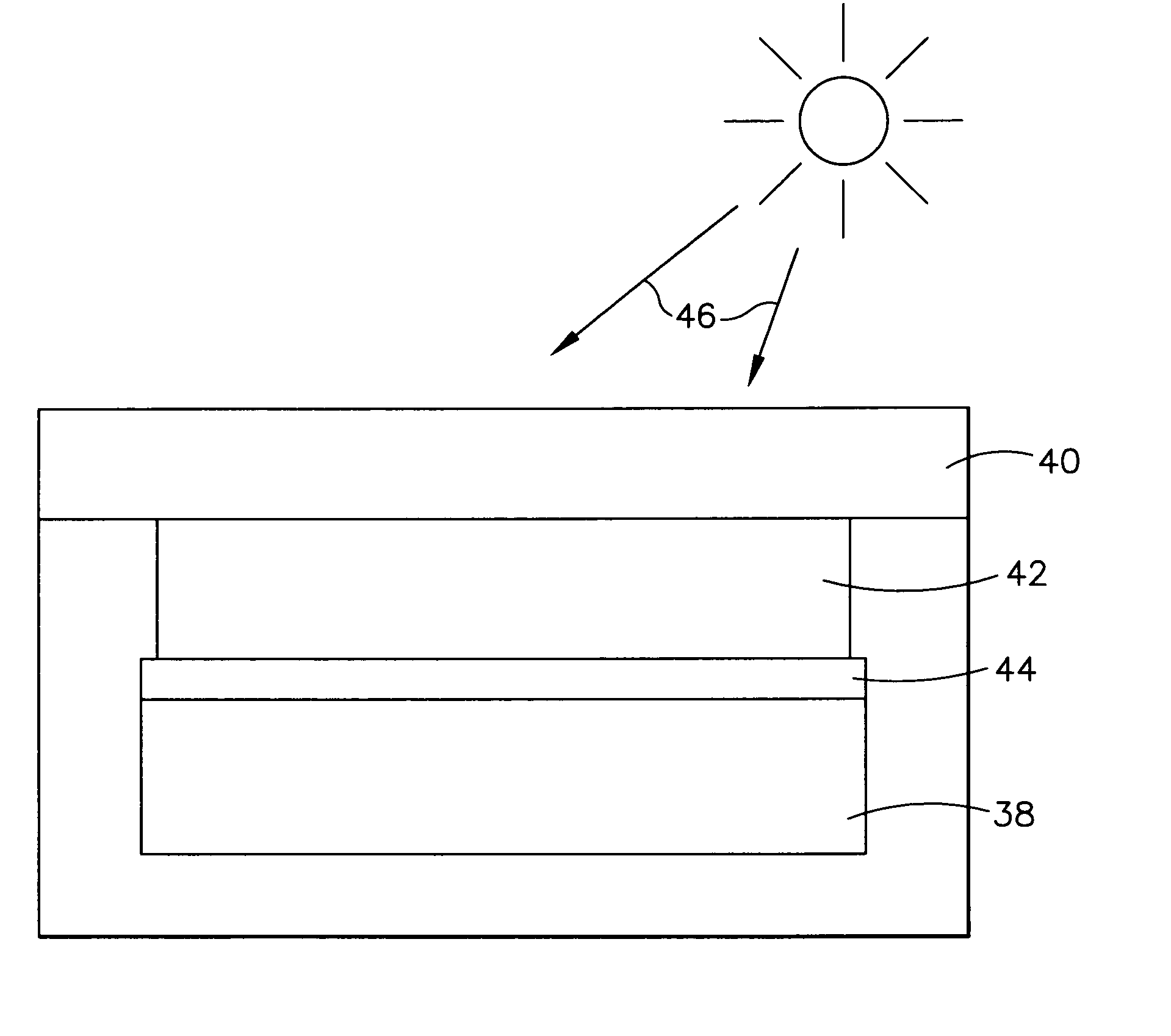Solar power collection with near infrared wideband reflector coating
a wideband reflector and solar power collection technology, applied in the field of coating, can solve the problems of increasing deployment risk increasing the cost of new solar cells, etc., and achieves the effect of reducing the operating temperature of solar cells, reducing the solar absorption of cells, and increasing conversion efficiency
- Summary
- Abstract
- Description
- Claims
- Application Information
AI Technical Summary
Benefits of technology
Problems solved by technology
Method used
Image
Examples
Embodiment Construction
[0016] The following detailed description is of the best currently contemplated modes of carrying out the invention. The description is not to be taken in a limiting sense, but is made merely for the purpose of illustrating the general principles of the invention, since the scope of the invention is best defined by the appended claims.
[0017] Broadly, the present invention provides a method of improving solar power collection with a NIR wideband reflector coating on a solar panel used in satellites. By reflecting unused wavelengths of solar energy the present invention lowers the operating temperature of the solar panel. At a lower operating temperature the electrical conversation efficiency increases therefore producing more power from the solar energy received. The present invention does this by reflecting a large portion of the NIR solar spectrum in addition to reflecting ultraviolet (UV) solar energy that is unused by a triple junction (TJ) cell for power generation but only hea...
PUM
 Login to View More
Login to View More Abstract
Description
Claims
Application Information
 Login to View More
Login to View More - R&D
- Intellectual Property
- Life Sciences
- Materials
- Tech Scout
- Unparalleled Data Quality
- Higher Quality Content
- 60% Fewer Hallucinations
Browse by: Latest US Patents, China's latest patents, Technical Efficacy Thesaurus, Application Domain, Technology Topic, Popular Technical Reports.
© 2025 PatSnap. All rights reserved.Legal|Privacy policy|Modern Slavery Act Transparency Statement|Sitemap|About US| Contact US: help@patsnap.com



